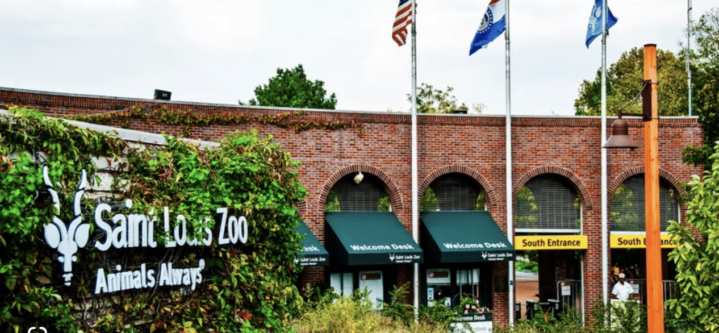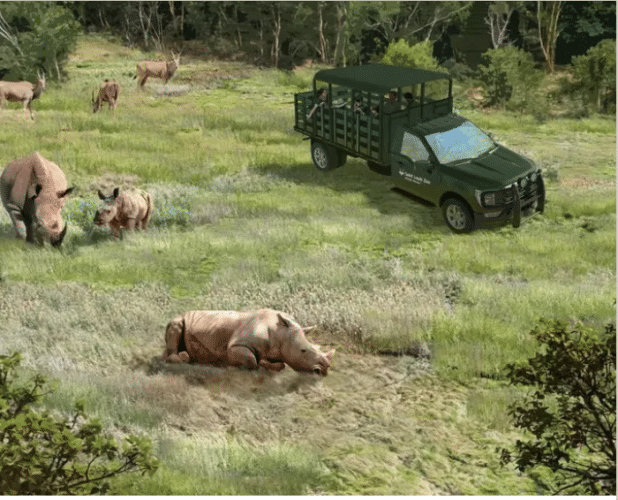
Presented by for Trackbill
The Unseen Work of the Saint Louis Zoo
The research and conservation arms of Saint Louis Zoo perform good work that matters to the whole world. It is often under-appreciated how they build intellectual capital in the St. Louis metro area, providing a more fertile environment from which other organizations and commercial enterprises, including startups, sometimes germinate and sprout.

Writing by Mike Fabrizi. Mike Fabrizi was born and raised in St. Louis, Missouri. An expat for 30 years to the Washington, DC area, he recently retired from a career including long stints with The MITRE Corporation, of McLean, Virginia, and The Aerospace Corporation, of El Segundo, California. Mike’s professional interests include complexity and complex adaptive systems, economic complexity, cities, and regenerative agriculture. He looks for ways to bridge the urban-rural divide, and likes to emphasize that which we share in common, not that which divides us. *Most* people everywhere are good. Give them half a chance and the goodness manifests itself. Mike now happily resides back home in St. Louis.
The research and conservation arms of Saint Louis Zoo perform good work that matters to the whole world. It is often under-appreciated how they build intellectual capital in the St. Louis metro area, providing a more fertile environment from which other organizations and commercial enterprises, including startups, sometimes germinate and sprout.

Wildcare Institute
The Wildcare Institute works with partners across the world to help animals and communities that are most vulnerable. The ultimate goal of the Wildcare Institute is to create a sustainable future for wildlife and for people around the world.
From the Wildcare Institute’s 2020 Annual Report
The Saint Louis Zoo’s Wildcare Institute was founded in 2004 by Dr. Jeffrey Bonner, the Zoo’s former CEO.
The Institute helps field scientists work with local and indigenous people to better the lot of critically endangered wildlife species. Part of its focus on long-term sustainability is to ensure that peoples’ needs, too, are reflected in solutions.
The ideal sustainability situation is one in which the local people see their economic well being and quality of life linked to improving the future for animal species’ survival and thriving. The Institute’s 2021 Annual Report indicates that it conducts field activities through 17 centers and 13 programs in locales both near (Forest Park) and far (Africa, Asia, Oceania, and elsewhere).
Institute for Conservation Medicine
The St. Louis Zoo’s Institute for Conservation Medicine was established in 2011 by Dr. Sharon Deem, a leader in the One Health movement and school of medicine.
One Health takes an integrative and holistic approach to health, medicine, and wellness. It seeks to identify and manage interactions between systems such as humans and our health delivery infrastructure; the agriculture system, including domesticated and farm animals as well as crops; wild areas, including wild floral and faunal assemblages; and microbiomes.
Veterinarians, ecologists, virologists, epidemiologists, immunologists, and various medical professions as well as laboratory and field scientists play One Health roles.
Of great concern to One Health is the emergence of new diseases among wild animal populations, their finding a vector (typically farm animals), and their spreading to human populations, giving rise to new epidemics or pandemics. Another concern is the loss of valuable and endangered wildlife populations, such as the decimation of lowland gorillas to Ebola.
Zoos have major roles to play in One Health, including:
- Conducting clinical, nutritional, pathological and epidemiological studies of diseases of conservation concern.
- Providing veterinary care to wildlife residing in zoos, thus helping to ensure successful breeding programs that contribute to sustaining biodiversity.
- Monitoring diseases in free-roaming wildlife populations, especially where they come into contact with domesticated animals, agricultural systems, and humans.
- Performing studies that contribute to the fields of comparative medicine and the discovery of all life forms, from invertebrates and vertebrate species to parasites and pathogens.
Zoo Department of Reproductive and Behavioral Sciences
The Zoo’s Reproductive and Behavioral Sciences Department is staffed by a group of scientists who conduct research to improve the sustainability of animal populations and to enhance animal well being through behavioral, endocrine, and reproductive research. Reproductive management is essential for:
- Maintaining genetically healthy, sustainable zoo animal populations.
- Avoiding producing more offspring than can be cared for at the high standards maintained by the St. Louis and other accredited zoos.
Breeding is managed using a “pedigree analysis”, a genetic database providing recommendations aimed at avoiding inbreeding and sustaining genetic diversity. Successful reproductive management includes:
- Conducting research to identify reproductive patterns and processes.
- Identifying and addressing zoo breeding program failures.
- Providing monitoring and diagnostic techniques.
- Developing methods to enhance fertility or temporarily prevent reproduction.
Reproductive research relies on technology such as microscopy, biopsy, ultrasound, biotelemetry and computerized semen analysis systems and on hormone analyses, a service of the Zoo’s Endocrinology Lab. Routine monitoring of hormones (for example, testosterone in males or estrogen and progesterone in females) and of behavioral interactions provide information about reproductive status that is essential to sound management decisions.
Cryopreservation of sperm and eggs in liquid nitrogen enables reproduction management beyond an individual animal’s lifetime. In addition, these frozen materials can be shipped between zoos to achieve breeding goals without needing to ship the animals, which is usually expensive and sometimes traumatic to the animals.





